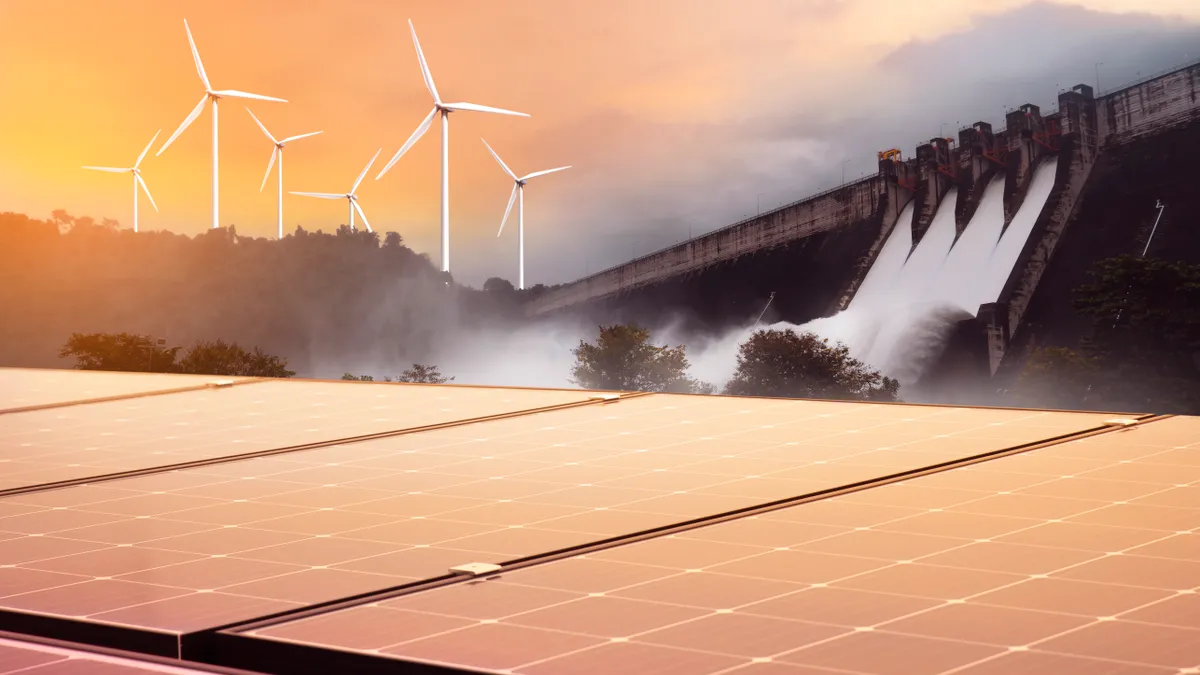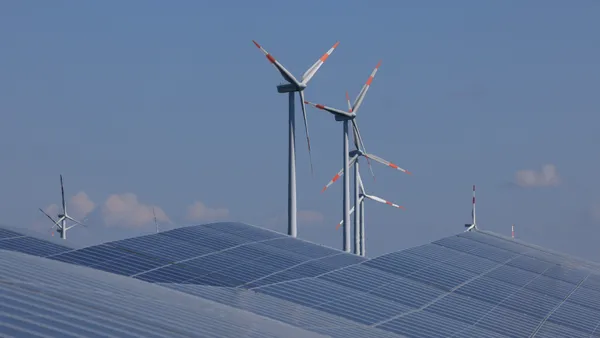Dive Brief:
-
In spite of growing demand for renewable energy, many of the projects financed by Bank of America have used funds from the bank more slowly than expected as the projects run into delays and supply chain disruptions, Karen Fang, managing director, global head of sustainable finance for Bank of America, said during a Monday morning session at the BNEF Summit in New York.
-
Kelly Cummins, deputy director of the Office of Clean Energy Demonstrations at the U.S. Department of Energy, agreed with other experts who said financial viability is now a bigger challenge for emerging energy technologies than technical viability.
-
The Inflation Reduction Act could spur more than $3 trillion in investment and add some 100 GW of renewable energy to the grid, Chelsea Jean-Michel, an offshore wind analyst with BloombergNEF, said.
Dive Insight:
If global energy markets were a baseball game, the IRA would move the U.S. from first base to third base, Jean-Michel said. But the renewable energy industry still faces numerous challenges, panelists said.
Some of those challenges could be addressed when the final rules come out. Fang estimated that in the near term, some 30% to 40% of renewable energy projects could benefit from IRA provisions that make tax credits more transferable, opening new avenues for financing. But she said Bank of America is also seeing more projects that could benefit from direct pay credits, as well as more inquiries from tax exempt entities that could be eligible for direct pay benefits. Market participants need to wait for further clarification on the transferability and direct pay provisions from the IRS.
Even for emerging technologies such as green hydrogen and advanced nuclear reactors, financial viability — rather than the viability of the technology itself — is the biggest barrier to deployment, said Kelly Cummins, deputy director of the Office of Clean Energy Demonstrations at the U.S. Department of Energy.
While Cummins said she didn’t have a “favorite child,” she said she believed green hydrogen would have an edge over advanced nuclear on account of hydrogen’s greater flexibility, and because advanced nuclear projects continue to experience cost overruns and project delays.
But nuclear isn’t the only low-carbon energy sector facing delays. David Hardy, group executive vice president and CEO of Ørsted Americas, said the company spent 10 years trying to get a permit for its first offshore wind farm in the U.S., which is now under construction and on track to be the first completed commercial offshore wind farm in the country.
“We have to do better than that if we’re really going to deploy this capital at pace,” he said, noting that the company’s onshore wind projects have run into unexpectedly high system upgrade costs and lengthy interconnection delays. “We want to deploy more wind and solar and the transmission is just not available,” he said.
Fang agreed, adding that many projects on the book at Bank of America have run into delays.
“The IRA is a tremendous tailwind for renewable energy,” Hardy said. “But we have real headwinds we are challenged with as well.”
Clarification: We have updated this story to provide more specifics about projects financed by Bank of America and how various aspects of the Inflation Reduction Act could impact renewable energy projects.













